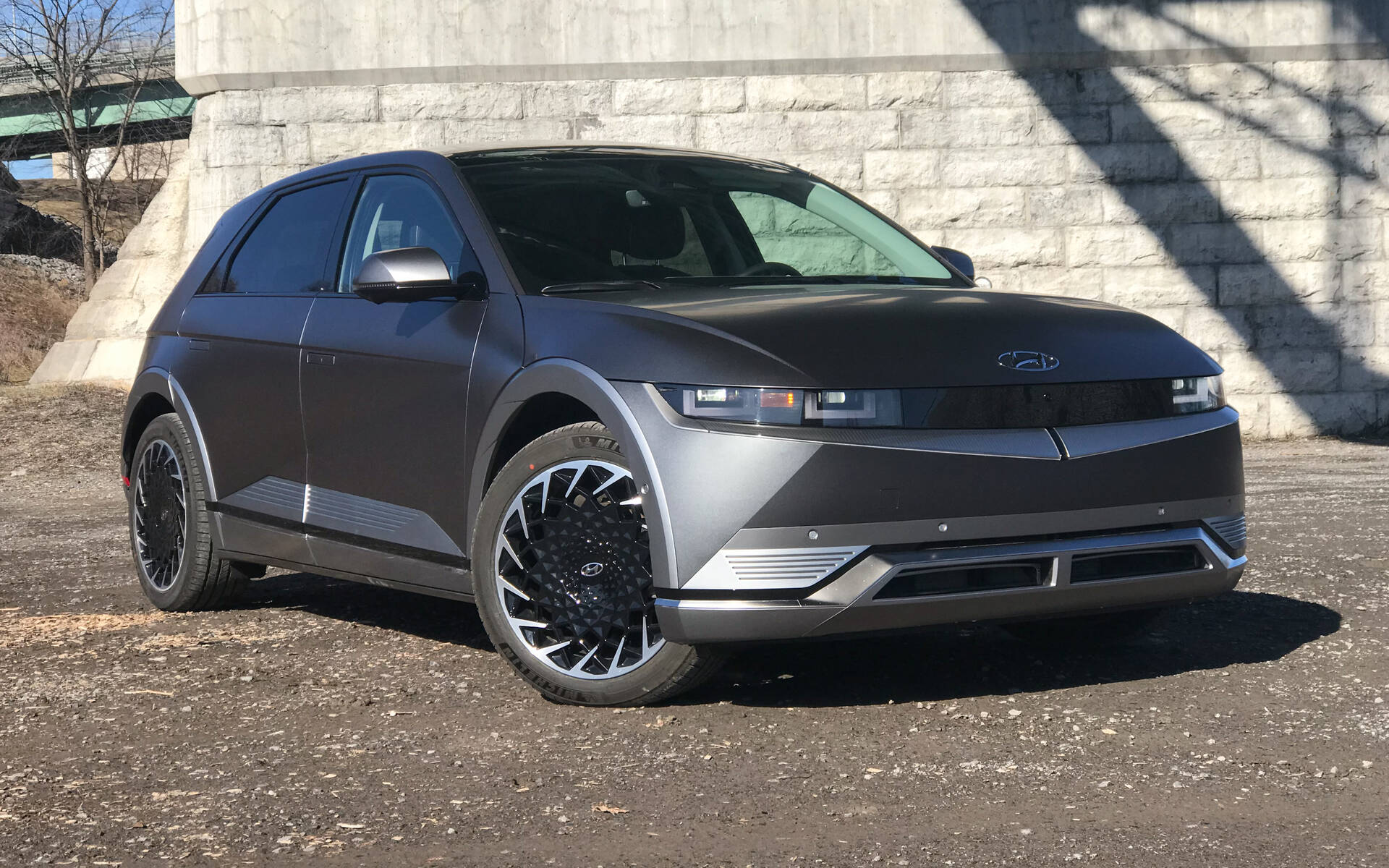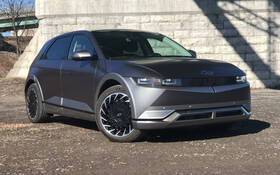2022 Hyundai Ioniq 5 Ultimate : Futuristically Ambitious

| Strong points |
|
|---|---|
| Weak points |
|
Hyundai made a serious leap forward in the electric vehicle segment with the launch of THE Ioniq 5 last year. Based on the E-GMP (Electric Global Modular Platform) architecture that is slowly spreading across the Hyundai/Kia/Genesis electric ambitions like the Genesis GV60 and Kia EV6, the Ioniq 5 stood out by winning the global Car, Design and Electric Vehicle of the Year awards.
Armed with a solid spec sheet, competitive pricing and a Blade Runner-esque silhouette, the Ioniq 5 quickly climbed the sales charts. It would actually be at the very top in the electric category if the 2022 model hadn't sold out so quickly. This stockout triggered long delays for customers waiting for the almost unchanged 2023 model.
- Also: Hyundai Unveils Sporty EV Concepts, Announces IONIQ 5 N in 2023
- Also: Slick Hyundai IONIQ 6 to Have Way More Range Than IONIQ 5
The Essential version of the Ioniq 5 is the most affordable, with a 125 kW (168 horsepower) motor that powers the rear wheels, fed by a 58 kWh lithium-ion polymer battery and currently priced at $47,550. The Preferred variant adds BlueLink connectivity, a 12.3-inch screen, fast charging and a heat pump, for $49,550. Throw in an additional $5,000 and get a 168 kW (225 horsepower) motor, a 77.4 kWh battery and range increase from 354 to 488 km.
Full of Electrons
Spending $57,550 will get you all-wheel drive thanks to two motors that join forces to crank out 239 kW (320 horsepower). For many, the only interesting version is this most expensive one. With the same 77.4 kWh battery, the range rating slips to 414 km. However, we only got 362 km of estimated range, without using air conditioning, on four charges at a Level 2 station. Note that the Ioniq 5 can gobble up to 250 kW of electrons during fast charging thanks to an electrical architecture that supports 800 volts.

One thing's for sure, the most expensive and complete Ioniq 5 is not lacking motivation, despite its 2,115 kg weight. It accelerates from 0 to 100 km/h in 5.15 seconds, devours the good ol’ quarter mile in 13.65 seconds with a top speed of 162.1 km/h, and goes from 80 to 120 km/h in 3.75 seconds. It also stops in 37.60 metres in emergency braking at 100 km/h. For comparison’s sake, its cousin and rival Kia EV6 GT-Line, accomplishes the same in 4.94, 13.43 (at 162.9 km/h) and 3.55 s, for a strictly identical weight. However, it took more time to come to a full stop, at over 38.40 m.
The Preferred version we tested was equipped with the $5,000 Ultimate package, which adds a healthy dose of equipment, including 20-inch wheels, an augmented reality head-up display, remote parking, a two-way charger (V2L), a sliding console, and some strange adjustable calf pads for the driver seat, along with about a dozen more gadgets.
Plenty of Room
The Ioniq 5’s interior is sleek and functional, but devoid of almost any style. Especially because the dashboard is dominated by two large combined screens that make up a huge rectangle. The materials that tie this interior together, chosen for their sustainability, are nothing to rave about.

The central screen is sometimes slow to react and the icons too small. You have to rest your hand on the edge of the screen to increase your chances of narrowing down on what you need. However, the images from the parking cameras are impeccably clear and sharp. Alas, it would be nice to have a page that displays the immediate and average power consumption.
Access to the front seats is natural, with ideal seat height and large doors. The cabin is spacious, both in the front and in the back, thanks to the flat floor and the long wheelbase. The driving position is good and the controls are efficient, precise and well positioned. The rear seats are easily accessible through large doors that open onto a seat that spans over 40 cm in length. The seatbacks also recline 30 degrees. Overall comfort is average, due to the shape of the cushions draped in thick leatherette in the Ultimate version.
In the rear, the trunk volume is average, with a fairly high floor. You can double its volume by folding the 60/40 split seatbacks. Under the front hood, the storage box won’t do much for you in terms of storage, but the 12-volt battery is very accessible.

En essai printanier, à environ 10 degrés, le chauffage s’est révélé inégal, imprévisible et inconstant. Il a fallu régler à 27 degrés
On a cold 10 degree Celsius morning, the heating proved uneven, unpredictable and inconsistent. We had to set it to 27 degrees to get some heat on the passenger side. It doesn't help that the controls are scattered across the pages and somewhat confusing. It's particularly annoying to have to dig through several menus to activate the heated seats and steering wheel.
The absence of a rear windshield wiper, which has been widely pointed out and criticized, is very noticeable in the rain. It's a problem, and the hoped-for solution didn't materialize for the 2023 models, unfortunately.
The Laws of Physics
The Ioniq 5 is smooth and quiet in the city with a solid body and a suspension that filters out the imperfections of the road. The Eco driving mode is the most user-friendly during city driving, with paddles behind the steering wheel that make it easy to switch between the five levels of energy recovery. The most powerful (iPedal) lets you drive effortlessly with just one pedal.

There's an immediate difference in throttle response when switching from Eco to Normal mode, and the Sport mode grants instant access to tons of torque. Traction is decent during corner entry, but the limit is quickly exceeded when going full throttle. The balance is suitable, but the Ioniq 5 will understeers if you push it. The so-so grip from the “green” tires doesn't help, despite their 255/45R20 size and low sidewalls. The traction control system also inputs, and playing with the throttle won’t do much to change that.
The Ioniq 5's feels heavy when cornering. The front end plunges and bounces around if the surface gets bumpy where damping becomes quickly overwhelmed, and the rear end is too stiff. When braking hard, it waddles slightly, due to its weight and its somewhat perched posture.
And that’s when you realize that this is a crossover, not a car, despite its racy looks! It's best appreciated for its good performance, spacious interior and refined electrical architecture. Here's to hoping that supply and delivery rates improve as soon as possible.











